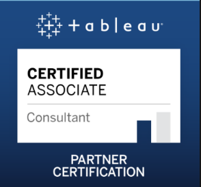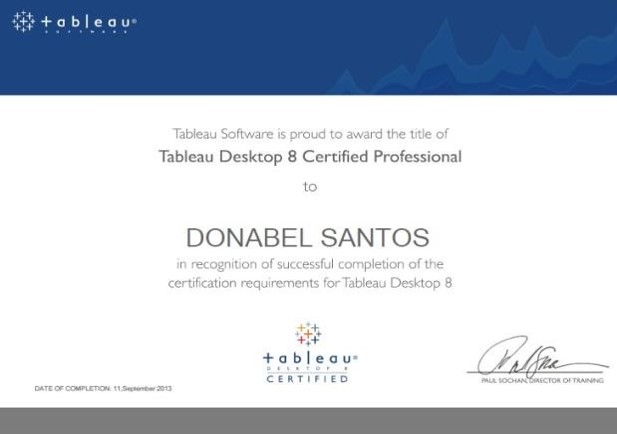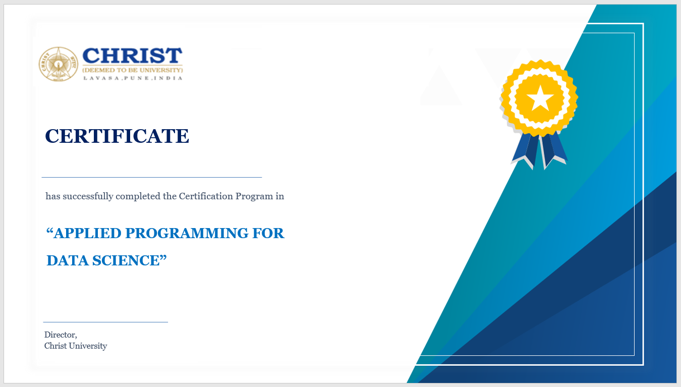
Program Duration
Duration 3 months
Training & Practice hours 75+

Program Pedagogy
Version 1 – Online, Self-paced
Version 2 – Online, Live training

Batch Start
Version 1 – Self-paced
Version 2 – Batch starts Jan 15, 2022
Program Highlights
-

Industry-oriented curriculum
-

Industry recognized Certifications
-

Python /R for Data Science
-

Visualization for Data Science
-

Machine Learning & Predictive Modelling
-

Web Scrapping
-

Interview Preparation Data Science roles
Program Variants
VERSION 1
SELF-PACED ONLINE
When can you take
Take anytime, Self-paced
Certification included
Tableau Desktop Certified Specialist certification from Tableau (Training included)
apply nowVERSION 2
LIVE TRAINING ONLINE
Indian participants
INR 30,000 plus GST
International participantsUSD 1000 plus taxes
When can you take
Batch starts Jan 7, 2022
Certification included
- a.
Certificate from Christ University
- b.
Tableau Desktop Certified Specialist certification from Tableau (Training & Examination costs included)
SKILLS YOU WILL LEARN
Investment Banking, Global Markets, Treasury, Equity Research, Trading and Risk
Learn practical concepts and industry applications across above domains
-

R Programing
-

Python programming
-

Libraries for Python & R
-

Machine Learning using Python & R
-

Data Visualization Tableau
-

Web Scrapping
PROGRAM OBJECTIVES
-
75+
TEACHING & PRACTICE HOURS
-
75+
CODES & MODELS FOR DATA SCIENCE & MACHINE LEARNING
-
50+
VISUALIZATION MODELS USED IN DATA SCIENCE
-
15+
LEARN FROM INDUSTRY LEADERS, DOMAIN PROFESSIONALS & ACADEMIC EXPERTS
-
150+
INTERVIEW QUESTIONS ASKED FOR VISULAIZATION AND PROGRAMMING ESSENTIALS IN DATA SCIENCE
-
24x7
ACCESS TO LEARNING MANAGEMENT SYSTEM WITH FULLY RECORDED VIDEOS
YOU WILL LEARN 7+ PLATFORMS AND TOOLS USED IN INVESTMENT BANKING
Practical applied training in platforms commonly used in the Investment Banking industry
Participants can apply domain concepts and frameworks in such platforms
Programming for Data Science PLATFORMS/TOOLS YOU WILL LEARN
WHAT JOB ROLES WILL I BE PREPARED FOR
- Data Scientist
- Data Analytics
- Data Analyst
- Business Analyst
- System Analyst
- Data Engineer
- Machine Learning Engineer
- Data Architect
- Analytics Manager
- Statistician
- Business Intelligence Manager
- Data Manager
SOME OF THE TOP COMPANIES GLOBALLY THAT RECRUIT FOR DATA SCIENCE ROLE

JUNIOR DATA SCIENTIST
Avg Salary
5LPA
Work Experience
0-3 years
Skills
Python, Pandas, AWS, Maths and Statistics

ASSOCIATE DATA SCIENTIST
Avg Salary
10LPA
Work Experience
3-5 years
Skills
Python, Pandas, AWS, R, Data Science Modeling

SENIOR DATA SCIENTIST
Avg Salary
18LPA
Work Experience
5-8 years
Skills
Python, Pandas, AWS, Tableau, Project Experience

PRODUCT MANAGER
Avg Salary
25LPA
Work Experience
8-12 years
Skills
Python, Pandas, AWS, R, Google Cloud , Management Skills

LEAD DATA SCIENTIST
Avg Salary
35LPA
Work Experience
12-18 years
Skills
Python, Pandas, AWS, Tableau, Google Cloud , Project Experience, Management Skills

DIRECTOR / SVP
Avg Salary
60LPA+
Work Experience
18+ years
Skills
Python, Pandas, AWS, R , Tableau, Google Cloud , Management Skills, Data Visualization
Program Pathway & outline
1
PROGRAMMING ESSENTIALS PYTHON / R
Learn the universal concepts of programming with syntax and semantics of the Python /R language. Learn Python / R Standard Libraries useful for Data Science
2
DATA CLEANING & TRANSFORMATION
Data Cleaning and Data Transformation are the important steps in any Machine Learning project, and we will cover important techniques and methods
3
DATA SCIENCE OPERATIONS
Learn Data Operations used by Data Engineers and Data Scientists; learn the tools, processes and organizational structures to support the data-focused enterprise.
4
DATA VISUALIZATION
Learn how to communicate the story that data represents using powerful visualization tools such as Tableau and PowerBI
5
WEB SCRAPPING & DATA WRANGLING
Learn act of and mapping raw data into another format suitable for another purpose. Data wrangling is incredibly important for any data scientist for harnessing the power of data for analytics in the real world
Overview
-

Duration
20+ Teaching & Practice Hours 20+ Application from various domain in Visualization Tableau & PowerBI templates Data Visualization projects
-

Includes
Comprehensive notes Practical examples Detailed codes Dashboard Templates
Introduction to Python IDE's
- General Introduction to Python and the class
- Using the command interpreter and development environment.
- Finding and using the documentation. Getting help.
- Create Your First Python Program
- How to Print in Python with Examples
- How to Define/Declare String Variable Types
Concept of Packages
- Add packages to Anaconda environment in Python
- How to create python namespace packages in Python 3
- Package Initialization
- Importing * From a Package
- Subpackages
Data Types & Data objects,
-
"
- Python TUPLE ? Pack, Unpack, Compare, Slicing, Delete, Key
- Python Dictionary(Dict) ? Update, Cmp, Len, Sort, Copy, Items, str Example
- Python Dictionary Append ? How to Add Key/Value Pair
- "Python Operators ? Arithmetic, Logical, Comparison, Assignment, Bitwise & Precedence"
- "Python Arrays ? Create, Reverse, Pop with Python Array Examples"
- Python Strings ? Replace, Join, Split, Reverse, Uppercase & Lowercase
- "Python String format() ? What is, How works & Examples"
- "Python String len() Method ? Python string length | len() method Example" "
Basic Operations
-
"
- Python Functions Examples ? Call, Indentation, Arguments & Return Values
- Python abs() Function ? Absolute Value Examples
- Python map() Function ? What is the map() function in Python? (With Examples)
- Python Timeit() with Examples ? What is Python Timeit()?
- Python File Handling ? How to Create, Open, Append, Read, Write
- Python Exception Handling ? Try, Catch, Finally "
Control flow & conditional statements, Python Built-in
-
"
- Iteration, looping and control flow.
- Python Conditional Statements ? IF...Else, ELIF & Switch Case
- Python For & While Loops ? Enumerate, Break, Continue Statement
- Python break, continue, pass statements ? Learn with Example
- Python OOPs ? Class, Object, Inheritance and Constructor with Example
- Python Built in Functions, abs(),all(), any(), bin(),ascii(), bool(), byterray(), callable(), chr(), classmethod(), complex(), divmood(), enumerate ()and Many more "
Investment for the Program
VERSION 1 SELF-PACED ONLINE
-
Financing Options
Tableau Desktop Certified Specialist certification from Tableau (Training included)
-
When can you take
Take anytime, Self-paced
VERSION 2 LIVE TRAINING ONLINE
-
Financing Options
- a.
Certificate from Christ University
- b.
Tableau Desktop Certified Specialist certification from Tableau (Training & Examination costs included)
- a.
-
When can you take
Batch starts Jan 7, 2022
Frequently asked question's about the course
Data scientists extract and interpret data to strengthen or align with a business s overall goals. Data scientists work in big data, machine learning, or AI companies. However, experience in these types of organizations is not required as far as what you need to become a data scientist.
Data scientists work in tandem with data analysts, data engineers, business intelligence specialists, and data architects to create and maintain databases, analyze data, and communicate business insights. Their job is to identify the data analytics problems that offer the greatest opportunities to the organization.
Data science is an extremely broad field, entailing everything from cleaning data to deploying predictive models. It s rare for a data scientist to do it all. Most data scientists specialize in a specific function within the data processing cycle.
Data Scientist Role and Responsibilities
Data scientists work closely with business stakeholders to understand their goals and determine how data can be used to achieve those goals. They design data modeling processes, create algorithms and predictive models to extract the data the business needs, and help analyze the data and share insights with peers.
Some common data scientist responsibilities include:
Problem definition
The problem statement is the most crucial step towards solving any data analytics problem. Data scientists need to think of the problem statement in mathematical terms. For example, Why is product X underperforming and What data on user behavior might help explain it
Data collection and wrangling
Data wrangling is the process of cleaning, restructuring, and enriching raw data to make it analyzable. The primary goal of data wrangling is to reveal a deeper intelligence by gathering data from multiple sources and organizing the data for a broader analysis.
Exploratory analysis
Exploratory data analysis postpones any initial assumptions, hypotheses, or data models; instead, data scientists seek to uncover the underlying structure of the data, extract important variables, and detect outliers and anomalies.
Data processing
The data processing cycle refers to the set of operations used to transform the data into useful information. In this stage, the data is entered into a system, such as a CRM like Salesforce or a data warehouse like Redshift so that a data processing cycle can be established. Next, this process is deployed as a repeatable data model to enable long-term data analytics projects.
Model training and deployment
Data modeling represents the way data flows through a software application or the data architecture within an enterprise. It s almost like a blueprint that establishes relationships between different business entities to show how data is collected and stored.
Documentation, visualization, and presentation
Data scientists are expected to document their processes, providing sufficient descriptive information about their data for their own use as well as their colleagues and other data scientists in the future. Visualization is perhaps the most crucial aspect of the data function since computational statistics are only meaningful if they can be understood and acted upon by the organization.
There are several important Job Roles in Data Science most important one are:
It is not required to have a Programming background, although desirable. However, those without Programming background will undergo Pre-requisite training on Programming to accelerate the learning when the Program begins.
Most data scientists use the following core skills in their daily work:
Statistical analysis
Identify patterns in data. This includes having a keen sense of pattern detection and anomaly detection.
Machine learning
Implement algorithms and statistical models to enable a computer to automatically learn from data.
Computer science
Apply the principles of artificial intelligence, database systems, human/computer interaction, numerical analysis, and software engineering.
Programming
Write computer programs and analyze large datasets to uncover answers to complex problems. Data scientists need to be comfortable writing code working in a variety of languages such as R, Python, and SQL.
Data storytelling
Communicate actionable insights using data, often for a non-technical audience.

VERSION 1 SELF-PACED ONLINE
When can you take
Take anytime, Self-paced
Certification included
Tableau Desktop Certified Specialist certification from Tableau (Training included)
Apply now
VERSION 2 LIVE TRAINING ONLINE
When can you take
Batch starts Jan 7, 2022
Certification included
A A Certificate from Christ University
B Tableau Desktop Certified Specialist certification from Tableau (Training & Examination costs included)
Apply now
Peer networking
In addition to the training program, you will have ample opportunity to network with the peers in your cohort. Prior to coming to the program, you will have access to your cohort where you can meet and engage with your peers before, during, and after the program.
Industry networking
Throughout the program, you will be taught and mentored by Data Scientists working/having worked with leading companies.
Alumni networking
Besides, after the program, you will be invited to join the Data Science Alumni group.
Placement Leads
We have networks with leading industry participants including banks, financial institutions, consulting firms and analytics firms; you can leverage that network for connecting with the industry and finding suitable opportunities in Data Science. Once you are trained and ready, we will help you with placement leads that can help you land your dream role in Data Science.
Having said that, its entirely your performance and skill-sets that will define your journey in landing your dream job. We cannot guarantee that you will get a job after completing the program. Obtaining a job is strictly based off one s own skill sets. Upon completion of the program, we will provide you with a certificate that you can print and/or add to your LinkedIn profile.
Networking opportunities
You will have great networking opportunities at the program. Our industry faculty work in the industry in leading positions and that will provide a great opportunity for you to network. Besides, EduEdgePro, through its vast industry network, will help you reach out to the leading financial firms for placements.





































